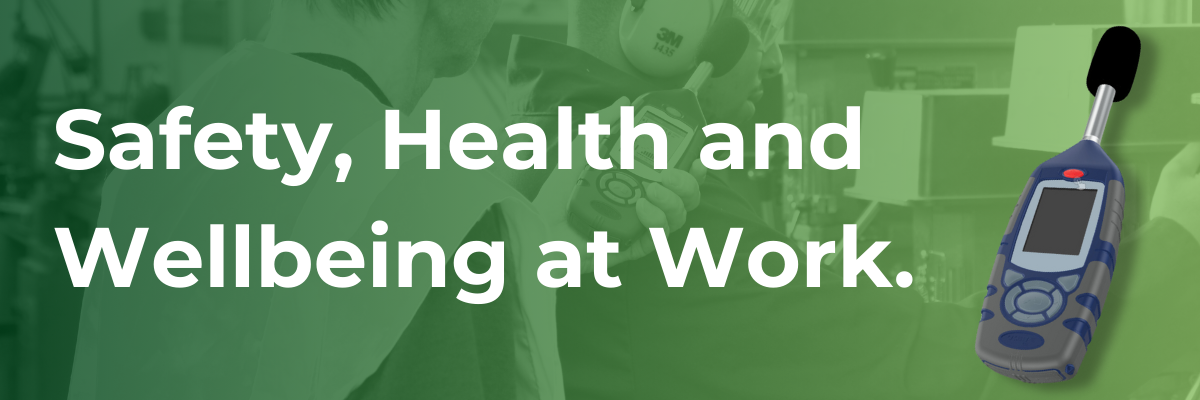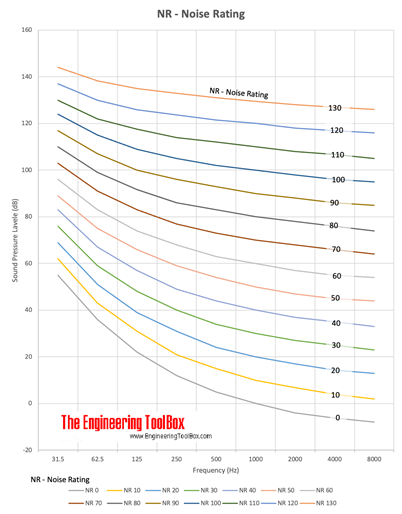Casella UK
Wolseley Rd, Kempston,Bedford MK42 7JY
+44(0)1234844100
info@casellasolutions.com

Noise induced hearing loss is the world’s number one occupational disease and is both permanent and incurable. And the guidance to the UK Control of Noise at Work Regulations [1] is pretty categoric when it comes to noise related damage. It says the latter is entirely preventable if:-
This of course assumes that correctly ‘prescribed’ hearing protection is well fitted, worn all the time when in a noisy environment and maintained in a good condition.
But elevated levels or tonal noise sources can also disturb sleep, cause stress and anxiety, compromise our immune function, lead to raised blood pressure and cardiovascular problems and is even linked to dementia which is a growing global issue.
As a first step in the assessment of hearing damage risk or suitability of a space for a given use, taking an objective measurement of the noise in the workplace or built environment is very straightforward using a hand-held sound level meter, ideally equipped with a frequency analysis capability as we will see.
When it comes to specifying hearing protection you first need to understand the nature of the noise source and particularly, how the noise level varies with time and frequency. Handling some of the jargon involved with the subject of acoustics can be quite a daunting task; decibels (dB), sound pressure level, peak level, time weighted averages (Leq or Lavg), frequency weighting (A or C), frequency analysis (in octave or one-third octaves) but fortunately this can all be simplified.
There are three methods for calculating the noise level at the ear when hearing protection is applied. There is a legal requirement for PPE manufacturers to supply the basic data for each of the methods which also requires you to have certain information about the noise source, specifically: –
The US have similar ratings to the UK & Europe and the equivalent of SNR is called Noise Reduction Rating (NRR). There is no formula to convert from one to the other and NRR tends to be lower than a headset’s corresponding SNR since it is determined by a different standard [2].
The calculation of noise at the ear is also different, but it does follow a similar principle and uses real world de-rating to take into account factors such as individual fit.
Using the SNR method, the calculated noise level at the ear is given as, LAeq’ = LCeq – SNR, where:-
All three above-mentioned rating methods are roughly equivalent in their accuracy and are applicable in most noise situations but there are exceptions, especially when the noise source is rich in low frequency content or has distinct tones, and caution must therefore be exercised when this situation arises.
This means that SNR, while good for comparing competitive hearing protectors may not be the best predictor of how it is going to perform in the real world and under such circumstances it is advisable to use the octave band attenuation method which requires an octave band analysis of the sound source. This is sometimes an optional sound level meter feature but is also available on modern personal noise dosimeters.
As an alternative to full frequency analysis, the H-M-L method gives a better understanding, particularly of the low (L) frequency content and only requires the A-weighted value in addition to the C-weighted noise level. It’s likely that if you have one value it is relatively easy to obtain the other and is typically a feature of many modern sound level meters and noise dosimeters which even do the ‘C-A’ calculation for you.
From a wellbeing perspective, getting the right noise workplace environment can play an important part in maintaining productivity, reduced absenteeism and improved employee retention but is equally important, for example, in a learning or hospital setting. Rather like the measure for hearing damage risk i.e. 85dB LAeq, however representative the subjective A-weighting characteristic (shape) may be of human hearing, a single number method does not help describe anything about frequency content. Why do we want to know about frequency? Woods [3] state that “the frequency content of the noise may not give us any more assistance in assessing its acceptability than does the weighted overall level – providing it is acceptable. But as soon as the noise is found to be excessive, we need to know more than a single figure can give us”. This requirement gave rise to a family of noise criteria (NC) curves which were developed in the US in the 1950s and basically, they consist of a family of curves each with its own NC rating number which were originally used for assessing office spaces. Later (1971) noise rating or NR curves were developed by the International Organization for Standardization (ISO) [4] to determine the acceptable indoor environment for hearing preservation, speech communication and annoyance.
Essentially, one plots the results of an octave band analysis on the curves shown (courtesy of the Engineering Toolbox [5]) and the highest curve which is ‘cut’ is the NR (or NC) for that space which can be compared with recommended levels as shown in the table below.
|
Maximum Noise Rating (NR) Level |
Application |
|
NR 25 |
Concert halls, broadcasting and recording studios, churches |
|
NR 30 |
Private dwellings, hospitals, theatres, cinemas, conference rooms |
|
NR 35 |
Libraries, museums, courtrooms, schools, hospitals operating theatres and wards, flats, hotels, executive offices |
|
NR 40 |
Halls, corridors, cloakrooms, restaurants, nightclubs, offices, shops |
|
NR 45 |
Department stores, supermarkets, canteens, general offices |
|
NR 50 |
Typing pools, offices with business machines |
|
NR 60 |
Light engineering works |
|
NR70 |
Foundries, heavy engineering works |

Getting the right noise environment is essential from a both a compliance and acceptability point of view which can lead to improved productivity, health and wellbeing. Quite rightly this is receiving a new focus as people are literally central to ESG (Environmental, Social and Governance) requirements which are impacting every organization regardless of their size or location.